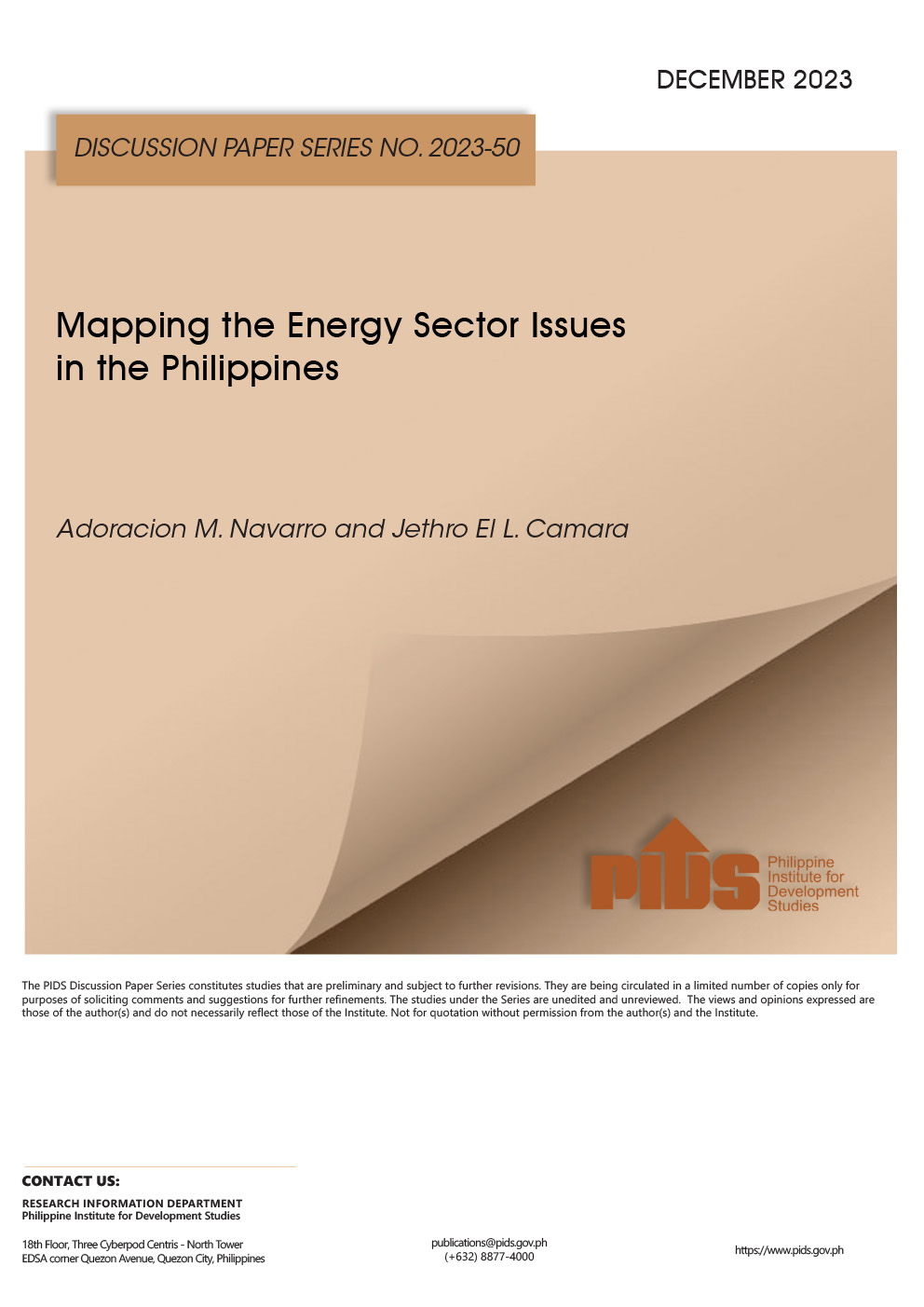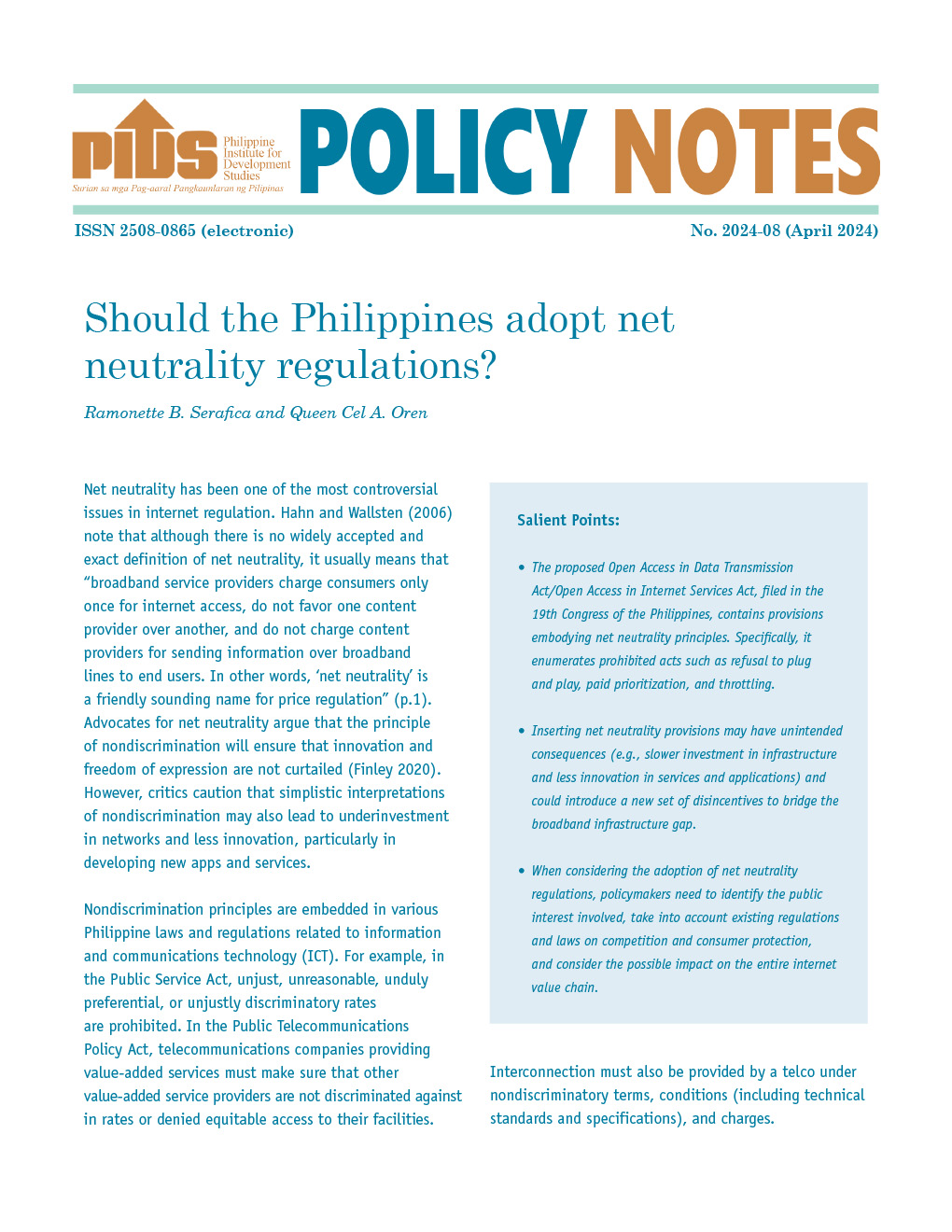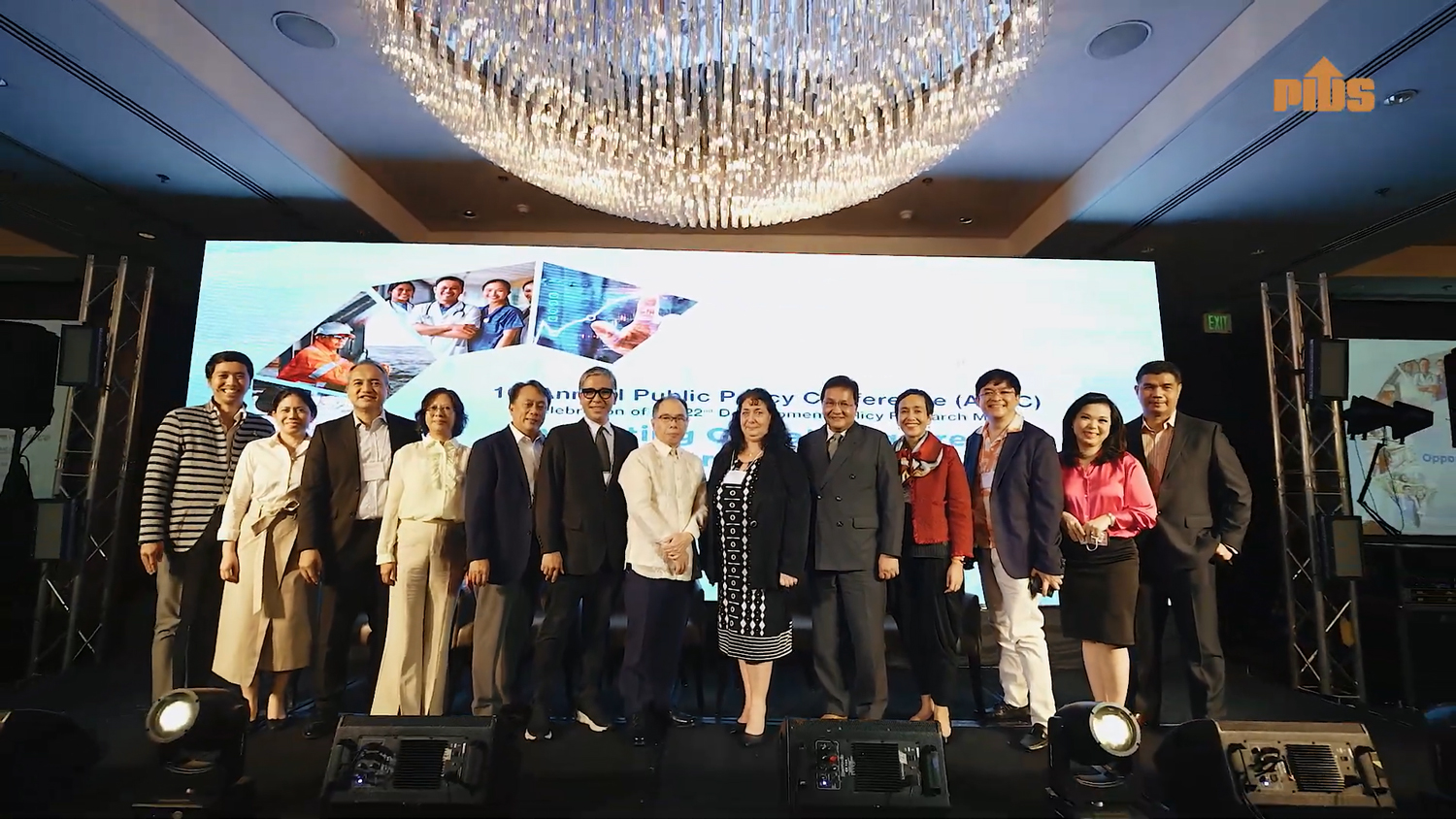Policy reforms must focus on providing accelerated and inclusive internet connectivity across the country for economic and social benefit.
This, according to a recent study published by state think tank Philippine Institute for Development Studies.
Authored by PIDS Research Fellow Ramonette Serafica and Research Specialist Queen Cel Oren, the study titled “The Philippine Digital Sector and Internet Connectivity: An Overview of the Value Chain and Barriers to Competition” explored the current digital value chain and identified possible solutions to promote firm entry and expansion as the country pursues digital inclusion.
Serafica and Oren observed that the Philippines’ digital sector has grown significantly. Philippine Statistics Authority data show the digital sector’s economic contribution grew by 7.8 percent (P1.87 trillion) in 2021. This amounted to 9.6 percent of the country’s gross domestic product.
However, they noted that the sector’s total median investment and the number of digital businesses in the Philippines are lower than in its peer countries like Cambodia, Viet Nam and Indonesia.
Globally, the internet value chain has had an annual growth of 15 to 16 percent from 2008 and an estimated total revenue of $6.7 trillion in 2020.
Value web
According to the study, the digital sector’s complex and interconnected value chains — or the “value web” — suggest that barriers in one market create a rippling effect on other markets within the growing sector.
“The interdependence of different markets within and across segments of the digital value chain implies that barriers to entry and expansion in one industry can have
far-reaching effects on the growth of the rest of the digital sector and the economy more widely. Ensuring robust competition across the digital value chain is therefore of paramount importance,” the authors said.
The study highlighted internet connectivity as the “most critical element” in the digital value chain. “Digital value chain participants ultimately depend on the broadband access network to reach the final users or consumers. Although natural barriers to entry exist, regulatory and strategic barriers further constrain competition,” Serafica and Oren said.
Barriers to entry and expansion in the internet access connectivity segment include high bandwidth cost, the required congressional franchise, expensive pole rental and bureaucratic requirements and lack of technical competence among internet service providers to make operations more efficient.
The authors recommended specific measures to address the barriers to entry and expansion.
“Key to developing viable and sustainable solutions is knowing where the gaps exist. For instance, the National Telecommunications Commission could develop a uniform reporting system for ISPs, while the Department of Information and Communications Technology could compile and publish a broadband map that identifies internet service availability down to the barangay level where competition in the last mile occurs,” they explained.
“Last mile” refers to the “last segment of data transmission from the network to the end-users”, letting users connect to the internet.
Other proposed measures include building effective cross-sectoral regulatory cooperation, strengthening and enforcing access regulations, adapting merger and acquisition guidelines, promoting increased transparency and use of open access framework and investing in training.












